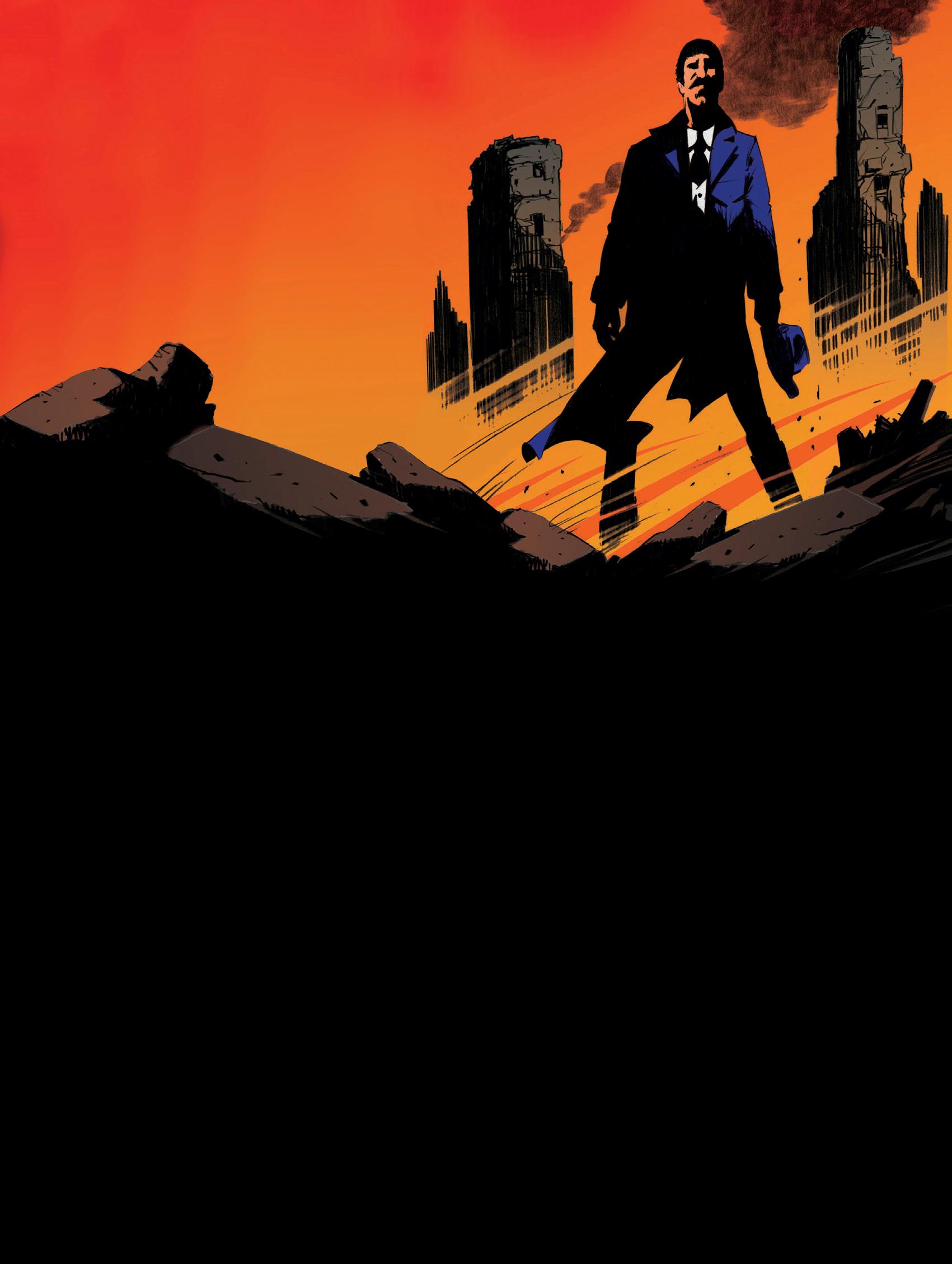
3 minute read
Comic genius
Jim McKelvey’s graphic account of his approach to innovation when founding Square got Ali Paterson (right) putting problems into a new perspective
There are a lot of books on entrepreneurship. There are a lot of books on banking. There are a lot of books on fintech. You know what there are not a lot of? Comic books on banking.
That’s been put right with a companion volume to Jim McKelvey’s excellent, The Innovation Stack: Building An Unbeatable Business One Crazy Idea At A Time.
Legend has it that McKelvey, co-founder with Jack Dorsey of Square, really wanted The Innovation Stack to be a graphic novel – lucky it wasn’t, because I listened to the audio edition. In it, rather than focus on a stage-by-stage retelling of how Square brought paying by card to the masses in the USA, McKelvey looks at what innovation and entrepreneurship are – ‘a series of real-world problems solved in brand-new ways. And true entrepreneurs are those who can stack those ideas and create something no one has ever done – and something no one else can copy’. And he also introduces us to the fellow entrepreneurs he chose to mentor and inspire him along the way.
True entrepreneurs, according to McKelvey, are incredibly hard to come by. Those that are still alive shouldn't have time to mentor, he argues. And so, QED, most of his are dead.
His fully fledged comic book, The Birth Of Banking, fabulously illustrated by Trevor Goring, concentrates on arguably the most influential in American financial history: AP Giannini, the man who founded what became Bank of America. His was, frankly, a comic book origin story. And the drama played out right through to his humble retirement. Someone please make this man’s life into a movie!
Despite McKelvey being born more than a decade after his death, the influence that Giannini had on his business ethos when building Square is undeniable. At a time when large organisations dominated the American landscape, Giannini saw the problem that ‘the little guy’ had when trying to use banking ‘tools’ way back in 1906. So he developed alternatives. The Bank of Italy, as it was then, built an innovation stack through revolutionary problem-solving.
It introduced low interest rates, a direct sales force, advertising, extended business hours (including weekends) – and it turned equality and financial inclusion into a commercial imperative, opening the first accounts for women at a bank within a bank, which was entirely run by women.
Another of McKelvey’s mentors – who hasn’t made it into a comic book yet – is the late Herb Kelleher of Southwest Airlines, which wasn’t competing with other airlines, but with Greyhound and local buses. As Kelleher was fond of saying, ‘planes make money in the air,
The Innovation
Stack by Jim McKelvey is published by Portfolio in hardback, audiobook and Kindle editions.
The Birth Of
Banking is available to download free from www.jimmckelvey.com Great for: Anyone stuck in a problem-solving rut Best read: Before you become one of McKelvey’s mentors!
Good read rating:
★★★★★ not on the ground’, so he figured out ways to keep them up there for as long as possible. At the time, it was normal for airlines to have a fleet of many different planes, which led to delays waiting for pilots qualified to fly them. Kelleher opted for all the same model, so they didn’t have to wait for crew. The delay then was in cleaning them, so everyone (including pilots) pitched in, accelerating turnaround to 10 minutes.
Square is one of only a handful of companies to have withstood an attack from Amazon, and it’s been successful because, like Bank of Italy and Southwest Airlines, it learned from solving one problem after another and another until eventually it hit the edges – and, voila, it had built an innovation stack.
McKelvey’s point is: yours can, too.










